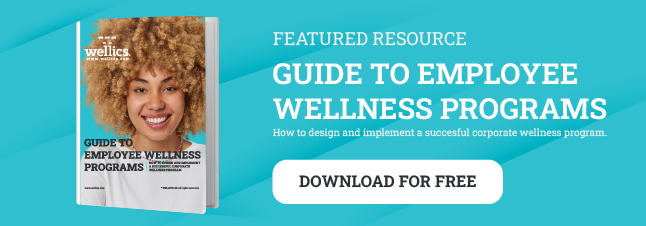World Mental Health Day is celebrated on October 10th every year to raise awareness of mental health issues and to advocate for better mental health care. This year's theme is "Mental health is a universal human right ".
Mental health is just as important as physical health, but it is often overlooked or stigmatized. This can be especially true in the workplace. According to a recent study by the World Health Organization, one in four people will experience a mental health condition in their lifetime. And yet, many people are afraid to talk about their mental health at work, for fear of being judged or discriminated against.
World Mental Health Day 2023: Our Minds, Our Rights
Mental health is a universal human right. Everyone has the right to the highest attainable standard of mental health, regardless of their race, ethnicity, gender, sexual orientation, socioeconomic status, or disability.
This year's theme for World Mental Health Day, "Mental health is a universal human right," emphasizes the importance of protecting and promoting mental health for all. It is also a reminder that people with mental health conditions have the same rights as everyone else.
Mental health is essential for our overall well-being. It allows us to think clearly, make sound decisions, manage stress, build relationships, and contribute to our communities. When our mental health is good, we are better able to cope with life's challenges and enjoy our lives.
However, one in eight people globally live with a mental health condition. Mental health conditions can have a significant impact on people's lives, affecting their physical health, relationships, and ability to work and learn.

Despite the fact that mental health is a universal human right, people with mental health conditions often face stigma and discrimination. This can make it difficult for them to access the support and services they need.
World Mental Health Day is an opportunity to raise awareness about the importance of mental health and to challenge stigma and discrimination. It is also a day to call for action to ensure that everyone has access to the quality mental health care they need.
The impact of mental health on the workplace
Mental health is a state of well-being in which an individual realizes his or her own abilities, can cope with the normal stresses of life, can work productively and fruitfully, and is able to make a contribution to his or her community. Mental health is just as important as physical health, but it is often overlooked or stigmatized. This can be especially true in the workplace.

Mental health problems can have a significant impact on the workplace. Employees who are struggling with mental health problems may be less productive, more likely to take sick leave, and more likely to experience burnout. This can lead to lost productivity, increased costs, and decreased morale for employers.
A study by the World Health Organization found that mental health problems cost the global economy $1 trillion each year in lost productivity. Another study by the Center for Workplace Mental Health found that employees with mental health problems are more likely to miss work, take early retirement, or leave their jobs altogether.
In addition to the economic costs, mental health problems can also have a negative impact on the quality of life of employees and their families. Employees who are struggling with mental health problems may have difficulty concentrating, making decisions, and managing their emotions. They may also be more likely to experience conflict with colleagues and supervisors.
How to create a more mentally healthy workplace: Wellbeing in action
Mental health is just as important as physical health, but it is often overlooked or stigmatized. This can be especially true in the workplace, where employees may feel pressure to perform at all times and to avoid showing any signs of weakness.
However, mental health problems can have a significant impact on the workplace. Employees who are struggling with mental health problems are more likely to take sick leave, experience burnout, and leave their jobs altogether. This can lead to lost productivity, increased costs, and decreased morale for employers.
There are a number of things that employers can do to create a more mentally healthy workplace.
Educating employees about mental health. Many people don't know enough about mental health to recognize the signs and symptoms of common mental health problems. Employers can provide educational resources to employees to help them learn more about mental health and how to take care of their own mental wellbeing.
Promoting a culture of openness and acceptance. Employees need to feel comfortable talking about their mental health at work without fear of being judged or discriminated against. Employers can create a more supportive culture by talking openly about mental health and by providing resources and support to employees who are struggling.
Offering mental health benefits. Employers can offer a variety of mental health benefits to employees, such as access to employee assistance programs (EAPs), mental health counseling, and paid sick leave for mental health reasons.
Creating a healthy work environment. Employers can create a healthier work environment by reducing workload stress, promoting work-life balance, and fostering positive relationships among employees.
The Role of Wellbeing Programs
Wellbeing programs are proactive strategies designed to support and improve the mental and physical health of employees. These programs encompass a wide range of initiatives, including mindfulness training, fitness programs, stress management workshops, and access to mental health resources. Here's how wellbeing programs contribute to a mentally healthy workplace:
Promoting Awareness: Wellbeing programs raise awareness about the importance of mental health and provide employees with tools and resources to manage stress, anxiety, and other mental health issues.
Creating a Supportive Culture: By offering wellbeing programs, organizations signal their commitment to employee wellbeing. This helps foster a culture of support and encourages employees to seek help when needed.
Reducing Stigma: Open discussions about mental health in the workplace can help reduce the stigma associated with seeking help. When employees feel comfortable discussing their mental health, they are more likely to access available resources.
Enhancing Work-Life Balance: Wellbeing programs often include initiatives to improve work-life balance, such as flexible scheduling and remote work options, which can significantly reduce stress and burnout.
Implementing Wellbeing Programs Through Wellbeing Platforms
To effectively implement wellbeing programs, many organizations are turning to wellbeing platforms. These platforms are digital tools that centralize the administration and delivery of wellbeing initiatives. Here's how they can be beneficial:
Accessibility: Wellbeing platforms provide easy access to a wide range of resources, including articles, videos, webinars, and self-assessment tools. Employees can access these resources at their convenience, promoting self-care.
Personalization: Wellbeing platforms can tailor content and resources to individual employee needs and preferences. This personalization ensures that employees receive information and support that is relevant to them.
Data Analytics: Wellbeing platforms often include data analytics capabilities that help organizations track program engagement and measure the impact on employee wellbeing. This data can inform future program enhancements.
Communication and Engagement: These platforms facilitate communication between employees and the HR department, enabling feedback, surveys, and event notifications. They also encourage employee participation in wellbeing programs.
Integration: Wellbeing platforms can integrate with other HR and benefit systems, streamlining administrative tasks and ensuring a seamless user experience for employees.
How Wellics is Using the WHO-5 to Create a More Mentally Healthy Workplace
Wellics is a comprehensive digital employee wellbeing platform that incorporates the WHO-5, a 5-question self-report questionnaire developed by the World Health Organization (WHO) to measure mental health and well-being. The WHO-5 is a brief, easy-to-use tool that can be used to identify individuals who may be at risk for mental health problems.
Wellics implements the WHO-5 in a number of ways.
First, Wellics asks employees to complete the WHO-5 questionnaire when they first sign up for the platform. This allows Wellics to establish a baseline for each employee's mental health and well-being.
Second, Wellics periodically asks employees to complete the WHO-5 questionnaire again. This allows Wellics to track changes in employee mental health and well-being over time.
Third, Wellics uses the WHO-5 questionnaire to personalize the content and recommendations that it provides to employees. For example, if an employee has a low WHO-5 score, Wellics may provide them with resources on stress management or coping with anxiety.
The WHO-5 plays an important role in Wellics' mission to promote mental health in the workplace.
Identifying employees at risk for mental health problems: Wellics uses the WHO-5 questionnaire to identify employees who may be at risk for mental health problems. This information can be used by employers to provide these employees with targeted support and interventions.
Tracking changes in employee mental health and well-being over time: Wellics periodically asks employees to complete the WHO-5 questionnaire again. This allows Wellics to track changes in employee mental health and well-being over time. This information can be used by employers to assess the effectiveness of their mental health programs and to identify areas where improvement is needed.
Personalizing the content and recommendations that Wellics provides to employees: Wellics uses the WHO-5 questionnaire to personalize the content and recommendations that it provides to employees. For example, if an employee has a low WHO-5 score, Wellics may provide them with resources on stress management or coping with anxiety.
Want to know how Wellics can help your organization achieve mental health excellence?
Contact us today to schedule a demo or learn more about our pricing plans. We offer a variety of solutions to meet the needs of organizations of all sizes.
At Wellics, we believe that everyone deserves to thrive in the workplace. That's why we're passionate about providing employers with the tools and resources they need to create a more mentally healthy workplace for their employees.









